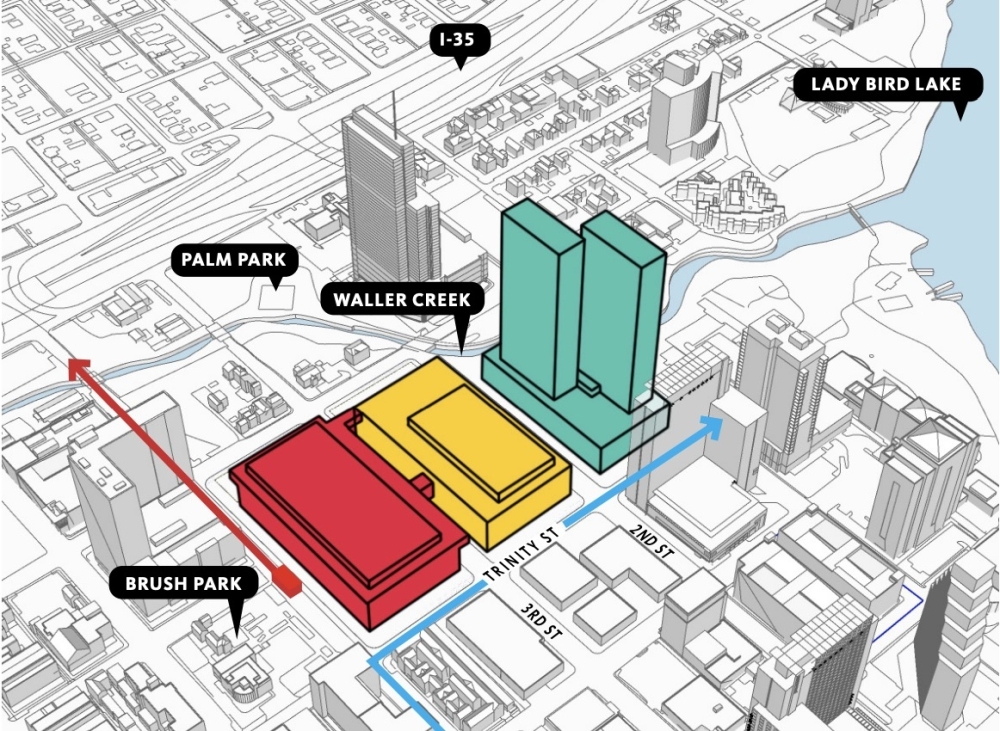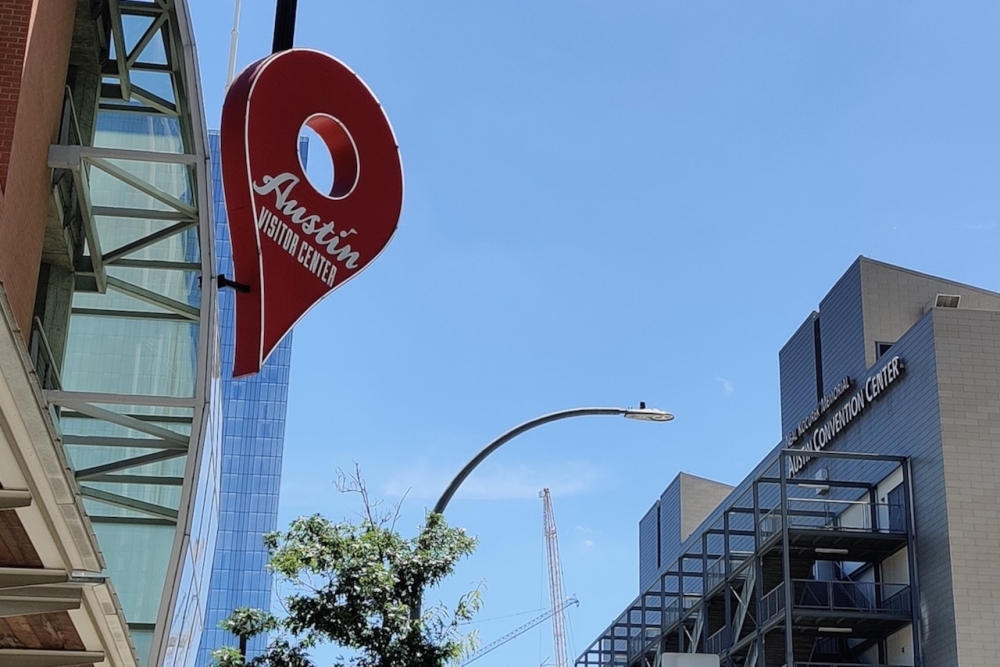The big picture
On May 22, Austin published a request for qualifications, or RFQ, for a firm to work on design, architecture and engineering for a convention center expansion.
In a press release, city leaders highlighted the RFQ's release as a notable step toward a new convention center and its related effects on Austin's economy.
"With an inadequate convention center, we lose out to competitors and, consequently miss out on millions of dollars for our Austin community. With a bigger convention center, the economic impact to our city is estimated to jump to over $750 million annually, from the current $468 million. A larger facility also means more travelers to Austin and jobs in the Austin hospitality industry," Mayor Kirk Watson said in a statement.
According to the city's convention center department, the $1.6 billion dollar project would result in the current building's closure from April 2025 through early 2029. However, the department said the convention center would continue to operate during that time in partnership with nearby hotels and the Palmer Events Center south of downtown.
“Austin is blessed to have one of the liveliest urban cores in any American city that isn’t on a coast, but our convention center is outdated, undersized and a barrier in the southeastern corner of downtown," said City Council Member Zo Qadri, whose district includes downtown. “The vision to transform this space into a community-centric destination for visitors and residents alike while also re-stitching the grid is an exciting prospect for many reasons, not least of which is the fact that it could lead to new opportunities for a lot more affordable housing in the heart of District 9."
The details
The new convention facility could include an underground exhibition hall spanning the entire property, topped by four stories of above-ground space split between two buildings.
According to the convention center department, the redeveloped facility could include:
- 709,000 square feet of exhibition halls, meeting rooms and ballrooms—up from 376,000 square feet currently—within a 1 million-square-foot facility
- New retail and community artistic space
- New outdoor green space along Red River Street available for public events
- The reopening of Second and Third streets to multimodal traffic through the property
- A pair of towers adjacent to the convention center created through a public-private partnership

Additional convention center funds would close any gap between that bonding capacity and the project's total cost; the department said $139.5 million was available as of the end of fiscal year 2022.
The convention center department said the financials were developed and vetted by HVS Consulting, Conventional Wisdom, PFM and Austin's own corporate finance team.
The backstory
Planning for the Austin Convention Center's expansion stretches back through several years of reviews, adjustments and interruptions.
The current facility, built in the early 1990s and expanded in 2002, is home to exhibition space used for dozens of events each year including SXSW Conference & Festivals.
City leaders in 2017 commissioned The University of Texas to examine how the facility might be expanded and what economic benefits that upgrade might bring to Austin. UT's report was released in early 2019 and found that the convention center has likely been losing business thanks to its lacking size and features compared to peer cities' exhibition halls.
The UT report proposed growing the convention center beyond its current footprint between East Cesar Chavez and East Fourth streets at a likely cost of more than $1 billion. While acknowledging the facility would end up operating at a loss—a common outcome in the convention business—the report stated an expansion could boost economic activity in Austin and help upgrade the entire eastern side of downtown.
Even as economic and entertainment activity ground to a halt in 2020 amid the pandemic, city officials still moved to pursue a convention center expansion.
At that time, Austin was also looking at buying up two adjacent city blocks for tens of millions of dollars for a western facility extension. However, questions about the necessity and viability of the expansion given economic fallout from COVID-19 also arose.
Since then, the western extension fell through while overall planning to transform the convention center within its current footprint continued. But no major updates have taken place since Austin's last City Council voted in June 2021 on a general framework for the expansion process.

Another viewpoint
While city leaders have pushed for years to move an expansion forward, the concept has been met with some skepticism and opposition along the way.
After Austin officials increased HOT collections to build up funding for a new convention center, a political group backed a ballot measure to limit HOT spending and require voter approval for a convention center expansion. That item was defeated in November 2019.
More recently, several relevant civic commissions have spent time analyzing the finances and scope of the plan. Some members of those bodies, and other resident groups, remain opposed to the project in any form.
The Downtown Commission in April 2022 recommended that City Council put expansion plans on hold to allow for independent, post-pandemic reviews of financial, attendance and industry trends as well as the possibility of adding affordable housing in a redeveloped building.
“Can we get a neutral, third-party study by consultants that aren’t financially benefiting in this space to go actually give us a pragmatic analysis of what the pros and cons will be?" said Marc Duchen, a consultant with the City Accountability Project group that has questioned the facility plans, during an April interview. "Help us—just like Project Connect—right-size, or whatever we need to do, to make this project actually valuable to downtown, the hotels, but also the people of Austin."
The convention center previously reported that the facility's programming and occupancy remained below prepandemic levels as of fiscal year 2022, but that bookings were trending upward heading into FY 2023.
Heywood Sanders, a public administration professor at UT San Antonio, also appeared before the commissions to state his belief that a $1 billion-plus convention project is likely unnecessary given recent trends in the exhibition space, and that more time and analysis would be needed to justify moving forward.
“With only the rarest of exceptions over the last 20-odd years, new and expanded convention centers have failed to reach the level forecast by outside convention center consultants. In a great many cases, the actual attendance and hotel room night generation has amounted to half or less of what the consultants forecast," Sanders said during a 2022 presentation.
Other issues raised include the amount of attendance drop-off experienced through the pandemic, the amount of public review the redevelopment plans have received, and whether Austin's new facility would compare and compete with convention centers in Dallas, Houston and San Antonio.
“Things change, times change, and we certainly have other priorities in Austin now. More pressing issues than to squander money on a big, shiny building, a big box that will probably stay empty," said Laura Templeton, City Accountability Project co-founder and board member.





